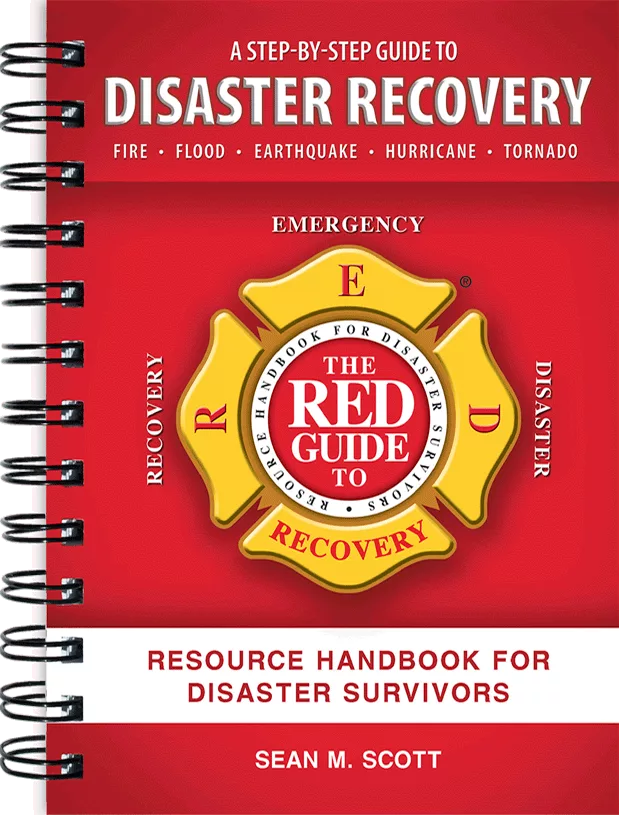6 Tips to Boost Training ROI by Focusing on Impact
Maximize Training Impact with Strategic Development for Long-Term Success

Image credit: Poca Wander Stock / iStock / Getty Images Plus via Getty Images
In today’s fast-paced restoration industry, where change is constant, the need for effective training and development has never been more critical. But how can you ensure that your training investments aren’t just ticking a box, but are truly making an impact? This article will show you how to get more from your training initiatives—whether you’re aiming to onboard, grow future leaders, improve operational performance, or retain top talent.
What’s in it for you? The ability to transform your team into a powerful, agile workforce capable of adapting to new technologies, embracing strategic pivots, and growing your business. To do this, we need to get better at managing training for impact—not just learning. When training is properly managed, it drives engagement, strengthens culture, and delivers real-world results that align with your business objectives.
With that in mind, let’s explore how to shift from focusing solely on ROI to creating lasting impact through strategic, well-managed training initiatives.
Creating Training Impact before ROI Calculations
We often hear about the importance of calculating Return on Investment (ROI) for training efforts. However, before we dive into the financial metrics, we need to focus on something even more fundamental—creating impact. After all, it’s the impact of training that ultimately generates a return. But how do we maximize that impact? How do we ensure our training interventions are aligned with business objectives and that they drive real-world results?
According to Brinkerhoff’s HPLJ methodology, the key to creating impactful training lies in designing it as a process, not a one-off event. Traditional training often focuses solely on the learning event (the course, seminar, or workshop), but HPLJ emphasizes the magic that happens before and after the event.
Training isn’t confined to formal classrooms, online workshops, or eLearning. It happens continuously—through on-the-job experiences, informal interactions, and everyday learning. Whether we manage it deliberately or not, our team is always learning—sometimes for better, sometimes for worse. Creating an organization that strategically manages training and development for impact can drive improvements in operational outcomes, culture, engagement, and retention.
This competency not only strengthens our workforce but also positions us to adapt more easily to new technologies, products, equipment, and strategic pivots. It fosters a culture of continuous learning and growth, which is especially crucial in our industry, where success depends on our greatest asset: our people.
The following is not an all-inclusive playbook but offer some tips to help you quickly start improving impact and are structured into three phases—General, Pre-Training, and Post-Training,—to improve the impact of training interventions that align with individual performance and organizational goals. In addition, at the bottom you will find additional resources and free downloads.
General Tips for Maximizing Training Impact
1. Prioritize Onboarding as the Foundation of Training
Impactful training starts on day one, with onboarding. This phase is your opportunity to communicate expectations, instill company values, and demonstrate that learning and development are integral to the organization's culture. A strong onboarding process sets the stage for long-term success by ensuring that new hires are equipped with the tools, support, and direction they need to succeed not only in their current roles but also in future opportunities.
How:
- Use onboarding to create a foundation of trust and engagement by introducing employees to a culture of continuous learning and development.
- Provide clear guidelines and resources during onboarding to ensure new hires understand the pathways for their career growth and how they can apply their training to real-world job responsibilities.
- To deepen your understanding of how to create a strong onboarding process, check out this article on Are You On Board with Employee Onboarding?. You can also find additional training and resources specific to our industry with our free Turn your Onboarding into WOWboarding Program.
2. Treat Training and Development as a Key Operational Area
Training and development should be viewed as a core functional area of your business, just like HR, sales, marketing, and project management. It’s not an isolated initiative but an ongoing, integrated part of your operational strategy.
How:
- Include training and development in your functional chart and any other organizational overviews (e.g., org charts, communication structures) that reflect company operations.
- Make it an assigned responsibility in job descriptions for managers, team leaders, and any other applicable roles.
- Establish clear expectations, processes, tools, and measurable goals for training, similar to how you would approach jobs, key projects or initiatives.
- Regularly evaluate and hold accountable those responsible for meeting training and development objectives.
3. Establish Clear Expectations for Roles and Training Goals
Effective training begins with a clear understanding of job roles, responsibilities, and the specific goals of training. Without these, it becomes nearly impossible to craft a focused training path or hold employees accountable for applying what they’ve learned. Both those responsible for training and learners need clarity around what the training aims to achieve and how it connects to real-world responsibilities.
How:
- Start with the End in Mind: When developing training, always begin by asking, What must the employee be able to do by the end of this training? This question helps define the skills or competencies needed for specific tasks, roles, or career growth.
- Use Structured Guides and Tools: Utilize resources like the "8 Steps to Train Someone" guide and infographic to outline clear training paths. These steps can help both trainers and managers create a roadmap for each learning objective, from specific job tasks to new technologies or career progression.
- Communicate Expectations Early: Make sure that both trainers and learners understand the specific outcomes expected from the training. This includes clear job responsibilities, the skills they must acquire, and how their progress will be measured.
4. Leadership Engagement Drives Training Impact
Leaders must be fully engaged and committed to training for it to create measurable impact. Research by Brinkerhoff found that management engagement accounts for 70% of the impact from training initiatives. Leaders’ influence, attitude, and involvement strongly affect with how well training is applied and sustained in the organization.
How:
- Understand Influence: Leaders must recognize that their attitude toward training directly influences its success. When leadership is committed, employees are more likely to engage with and apply the training effectively.
- Commit Time and Resources: Leadership must be willing to invest the necessary resources—time, budget, and tools—into training and development. This ensures that learners have what they need to succeed.
- Engage Learners: Leadership should dedicate time to actively engage with learners by providing feedback, recognizing achievements, and celebrate progress. This engagement fosters a positive learning environment.
- Hold Employees Accountable: Set clear expectations for applying training on the job and hold employees accountable. Accountability ensures that training leads to improved performance.
- Provide Feedback and Reinforcement: Offer regular feedback to guide employees in applying their new skills and celebrate their successes. Positive reinforcement helps sustain the impact of training over time.
5. Mitigate Performance Barriers to Training Application
Even the best training will fail to create impact if performance barriers prevent employees from applying what they’ve learned. These barriers could range from lack of work design, process to cultural resistance within the organization.
How:
- Identify Barriers: Start by actively identifying what’s preventing employees from applying their training. Survey your organization and gather feedback from employees, supervisors, and managers to gain insight into common challenges.
-
Mitigate Barriers: Once identified, take steps to reduce or remove these obstacles. Barriers could include:
- Access to Equipment or Resources: Employees may learn a new technique but can’t apply it if the required equipment is broken or unavailable.
- Cultural Resistance: Negative attitudes from leadership or coworkers, such as “we don’t do it that way,” can discourage employees from using new skills. Leadership must actively support change to mitigate these pressures.
- Accountability: Lack of accountability to apply the training on the job can be a major barrier. If there are no expectations or follow-ups, employees are less likely to incorporate the training into their daily work.
- Opportunity to Apply Training: If employees don’t have timely opportunities to use what they’ve learned, the training’s impact diminishes. Ensure that employees can apply their skills shortly after training.
Example Action Step:
Download our free Barriers Checklist and use it to survey your organization. Collect input from employees and managers to identify barriers that exist in your workplace. By addressing these obstacles, you’ll help ensure that training has a clear path to creating impact and driving performance.
6. Leverage Learning with Clear Pre- and Post-Training Processes
For training to have maximum impact, both pre-training preparation and post-training follow-up are crucial. A key element of Robert Brinkerhoff’s High Performance Learning Journey (HPLJ) methodology is focusing on strategic learning—ensuring that training is tied directly to job application before the event. As Brinkerhoff emphasizes, "It is not who learns the most, but who learns the most strategically." This approach prioritizes aligning learning with job performance and business outcomes from the outset.
How:
-
Pre-Training:
- Help learners connect the training objectives to their specific job responsibilities, focusing on how the training will be applied on the job. This allows learners to approach the training strategically, seeing its relevance and value from the start.
- Engage learners by aligning the training with broader business objectives. Be clear about the expected performance outcomes, such as reducing callbacks or increasing sales. Where possible, define specific, measurable results.
- Use the Leverage Learning Worksheet to guide this process. Learners can record their job responsibilities and reflect on how the training will impact their role. This ensures both learners and managers are aligned on goals before the training begins and prepares learners to absorb information that is relevant to their tasks.
-
Post-Training:
- Create a safe environment for learners to discuss their progress, share additional training needs, and conduct self-assessments. This can be done using a Training Journal to track experiences, reflect on learning, and receive feedback from mentors or supervisors.
- Encourage learners and on the job trainers to apply a "Learn-Do-Repeat" model, where they practice their new skills on the job, collect feedback, and continue practicing until they achieve proficiency. This method reinforces learning and mastery through real-world application.
- Celebrate achievements and recognize the progress learners have made, ensuring that the training is tied to ongoing development and growth. Engage the learner on the journey and show support for their career goals.
Example Action Step:
Download the Leverage Learning Worksheet to easily execute these pre- and post-training strategies. It will help you guide learners through self-assessments, reflection, and continuous improvement, ensuring training is effectively applied in the workplace.
Incorporating Impact for Lasting Success
By focusing on impact, you ensure that your training efforts go beyond mere learning events to truly drive performance, engagement, and growth. When training is well-managed and aligned with business objectives, it empowers your workforce, fosters innovation, and positions your organization to adapt to industry changes.
I wish you much continued Restoring Success by fostering a culture of learning, accountability, and strategic application. Remember, the journey doesn’t end with the training session—it’s the ongoing process of applying, reinforcing, and refining that creates lasting impact.
FREE Downloads
- Leverage Learning Worksheet
- Coaches Tip Check List: Beware and Minimize Barriers
- Leading a Learning Culture Graphic
For more insights, check out related articles:
- New Tech Under your Wing
- A Career in Restoration: It is Time to Change Our Approach
- Results-Oriented Training Starts with Commitment
References
Brinkerhoff, R. O. (2020). Improving Performance Through Learning: A Practical Guide to Designing High Impact Training.
Looking for a reprint of this article?
From high-res PDFs to custom plaques, order your copy today!








